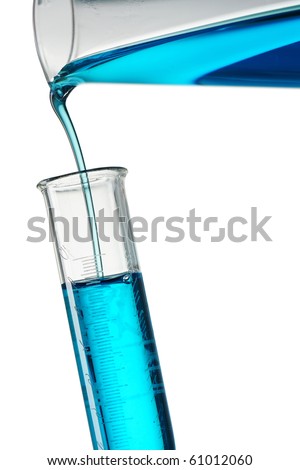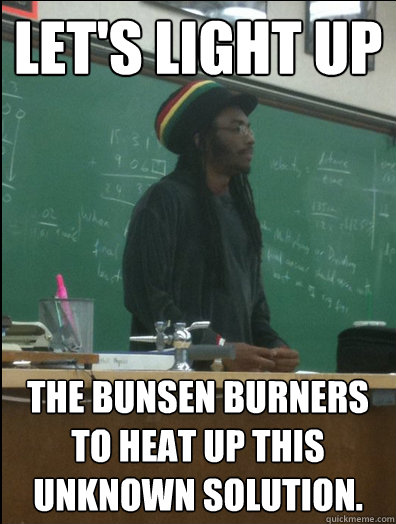Objectives
1) To observe a variety of chemical reactions.
2) To interpret and explain observations with balanced chemical equations.
3) To classify each reaction as one of the four main types.
Supplies
Equipment
lab burner6 test tubes
one will be flame heated
test-tube clamp
medicine dropper
wood splints
cruicible tongs
steel wool
safety goggles
lab apron
Chemical Reagents
copper wire(bare)
iron nail
0.5M copper(II) sulfate solution
solid copper (II) sulfate pentahydrate
water
0.5M calcium chloride solution
0.5M sodium carbonate solution
mossy zinc
2M hydrochloric acid solution
hydrogen peroxide solution(6%)
manganese (IV) oxide
Procedure
1)Put on lab coat and goggles
2)Observe before, during , and after each reaction. Record in table one.
Reaction one
3) Adjust burner flame to high heat
4)Using crucible tongs, hold 6 cm length bare copper over hottest part of flame for a few minutes.
Reaction Two
 5) Clean iron nail with steel wool until it turns shiny
5) Clean iron nail with steel wool until it turns shiny6) Nail in tube and copper(II) sulfate solution so half of nail is covered.
7) After 15 minutes, remove nail and note changes
Reaction Three
8) Put solid copper(II) sulfate penta hydrate until the tube is one third full.
 9) With clamp, angle away from peers and heat (back and forth gently)
9) With clamp, angle away from peers and heat (back and forth gently)10) Continue until no more changes.
Reaction Four
11) Allow contents from reaction three to cool.
12) Use medicine dropper to add two or three drops water to tube.
Reaction Five
 13) Fill a tube a quarter full with calcium chloride solution. Fill second tube 1/4 full sodium carbonate solution.
13) Fill a tube a quarter full with calcium chloride solution. Fill second tube 1/4 full sodium carbonate solution.14) Pour calcium chloride into the sodium carbonate solution.
Reaction Six
15)Place a piece of mossy zinc into the test tube.
16) Add HCl into the tube until the zinc is completely covered
Reaction Seven
17) Half fill a tube with hydroperoxide.
18) Add small amount of manganese (III) oxide.
19) Test gas by placing glow(NOT BURNING) splint into the mouth of a tube.
20) Clean-up!



No comments:
Post a Comment